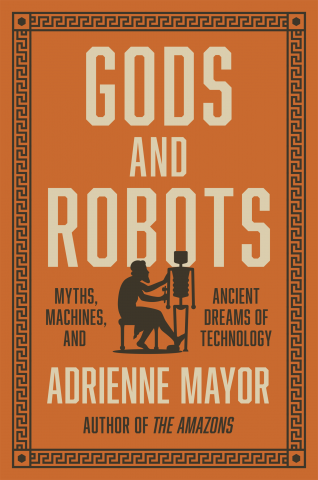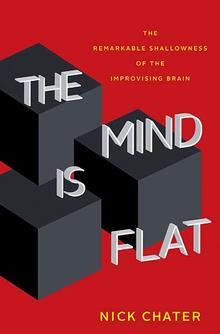You have /5 articles left.
Sign up for a free account or log in.
In a year as crowded with historical anniversaries as this one, it’s hard to argue for any single one of them as pivotal, but the bicentennial of Mary Shelley’s Frankenstein; or, The New Prometheus has a better claim to than most. Few novels send a new mythological being out into the world. Not Victor Frankenstein himself, of course, who is a recycled archetype at best: the original bioengineer is a grotesque if not mad version of Prometheus, and his punishment for the hubris of bringing dead flesh back to life follows accordingly.
Rather, it’s the creature who embodies a truly original addition to the cultural imagination. A triumph of knowledge over nature, intended as beautiful but ghastly even to himself, he is sympathetic in ways that Victor is not: his creator denies him the one thing that would make his damaged condition bearable -- someone of his own kind to love. Mary Shelley’s narrative has been radically transformed in cinematic adaptations over the years. (If there’s a movie where the creature reads Milton, I haven’t seen it.) But now, on the 200th anniversary of her novel’s publication, the two central characters are allegorical figures of the two sides of the technologically enhanced drive for human self-refashioning -- expressions of the tragic sense that it won’t end well.
Looking over recent university press catalogs, I noticed how many new and forthcoming titles sounded like glosses on her vision. The connection is direct in the case of Daisy Hay’s The Making of Mary Shelley’s Frankenstein (Bodleian Library, November). Emphasizing the young author’s engagement with “the pressing issues of her time: from science, politics, religion, and slavery to maternity, the imagination, creativity, and community,” Hay “stitches together the objects and manuscripts of the novel’s turbulent genesis in order to bring its story back to life.”
 Some of the classical antecedents to Frankenstein will be found in Adrienne Mayor’s Gods and Robots: Myths, Machines, and Ancient Dreams of Technology (Princeton University Press, November), which tells “the fascinating story of how ancient Greek, Roman, Indian, and Chinese myths envisioned artificial life, automata, self-moving devices, and human enhancements -- and how these visions relate to and reflect the ancient invention of real animated machines.” (Publication dates and quoted material here and below are taken from the presses’ catalogs and websites.)
Some of the classical antecedents to Frankenstein will be found in Adrienne Mayor’s Gods and Robots: Myths, Machines, and Ancient Dreams of Technology (Princeton University Press, November), which tells “the fascinating story of how ancient Greek, Roman, Indian, and Chinese myths envisioned artificial life, automata, self-moving devices, and human enhancements -- and how these visions relate to and reflect the ancient invention of real animated machines.” (Publication dates and quoted material here and below are taken from the presses’ catalogs and websites.)
Arriving in translation three years after it was published in France, Hubert Haddad’s novel Desirable Body (Yale University Press, August) is described as “a contemporary Frankenstein.” The paralyzed survivor of an accident is given a new lease on life when his head is transplanted to a new body. I suppose it could also be described as someone’s old body being given a new head. “The gruesome transplant (detailed in a manner that highlights the author’s own diligent research and comprehension) parallels other ways humanity mutates nature globally …”
It may not make head transplants possible anytime soon, but the progress of neuroscience keeps breaching the mind-body distinction in surprising ways. Russell Poldrack’s The New Mind Readers: What Neuroimaging Can and Cannot Reveal About Our Thoughts (Princeton, October) offers “an insider’s perspective on what is perhaps the single most important technology in cognitive neuroscience today -- functional magnetic resonance imaging, or fMRI, which is providing astonishing new insights into the contents and workings of the mind.” It and other brain-mapping tools “are increasingly being used to decode our thoughts and experiences,” which raises “sometimes troubling questions about their application in domains such as marketing, politics, and the law.” It also poses the challenge, at least implicitly, of producing some mass of genetically engineered tissue that would produce the same waves.
 And more of human interiority may be available for technological inspection than we’d prefer to imagine, at least if Nick Chater is right that The Mind Is Flat: The Remarkable Shallowness of the Improvising Brain (Yale, August). Rather than there being a surface layer of awareness that sits atop “a deep and complex set of inner beliefs, values, and desires that govern our thoughts, ideas, and actions,” we have brains that generate “behaviors in the moment based entirely on our past experiences” through “ceaseless and creative improvis[ing].”
And more of human interiority may be available for technological inspection than we’d prefer to imagine, at least if Nick Chater is right that The Mind Is Flat: The Remarkable Shallowness of the Improvising Brain (Yale, August). Rather than there being a surface layer of awareness that sits atop “a deep and complex set of inner beliefs, values, and desires that govern our thoughts, ideas, and actions,” we have brains that generate “behaviors in the moment based entirely on our past experiences” through “ceaseless and creative improvis[ing].”
Again, its sounds like a challenge to reverse engineer something comparable. Just wait! The tricentennial of Mary Shelley’s novel will be celebrated by our replacements.




